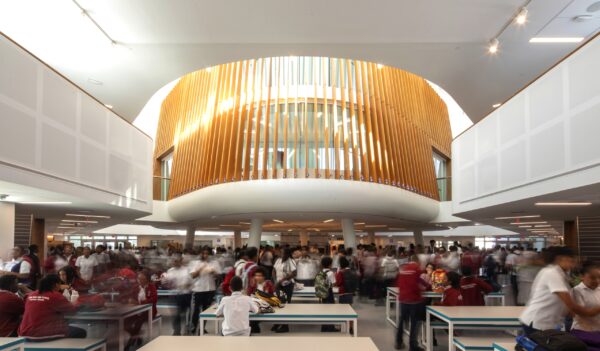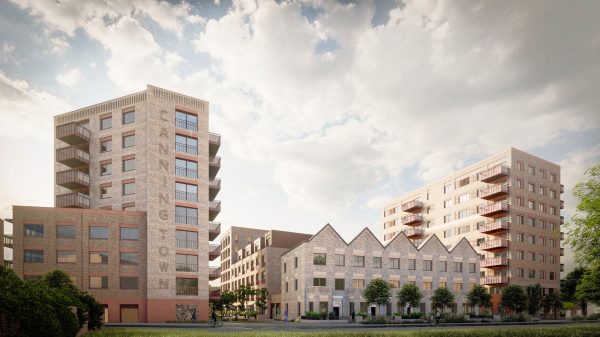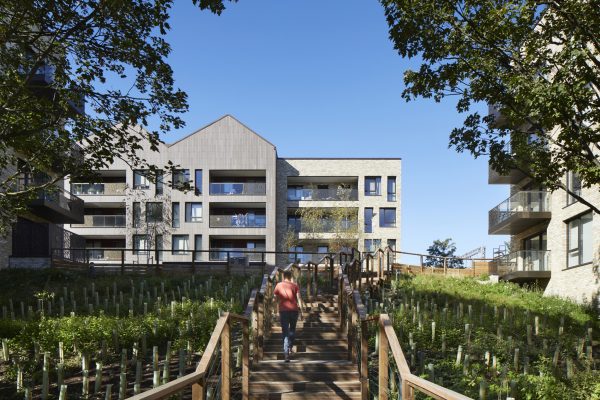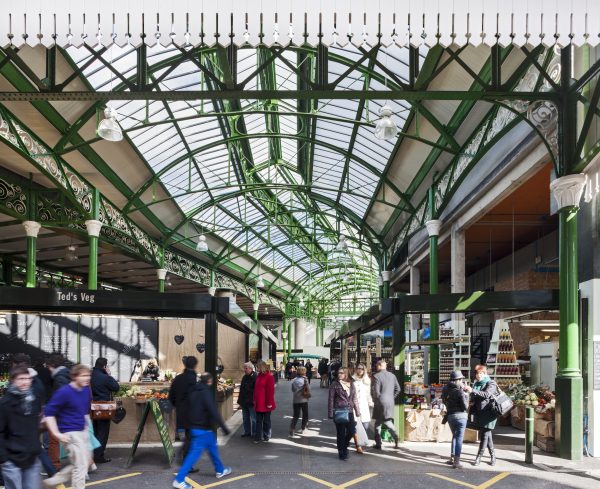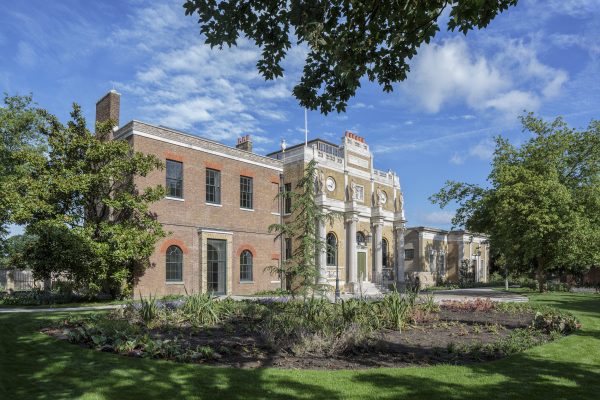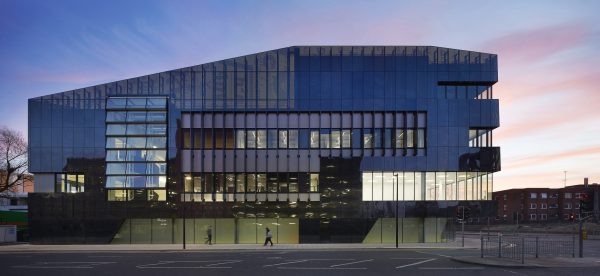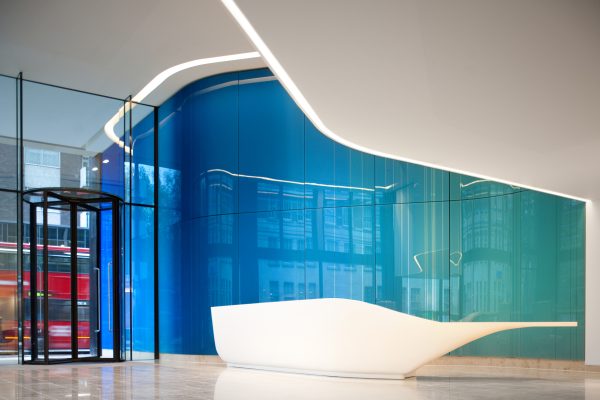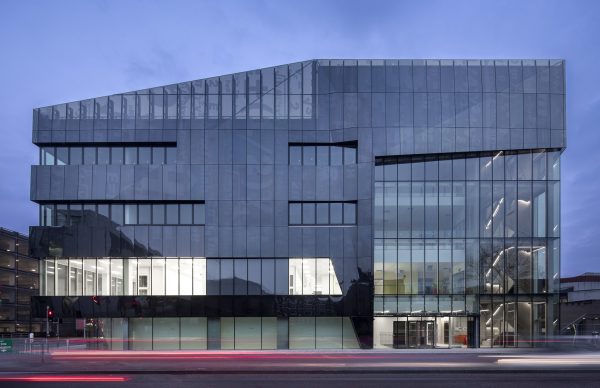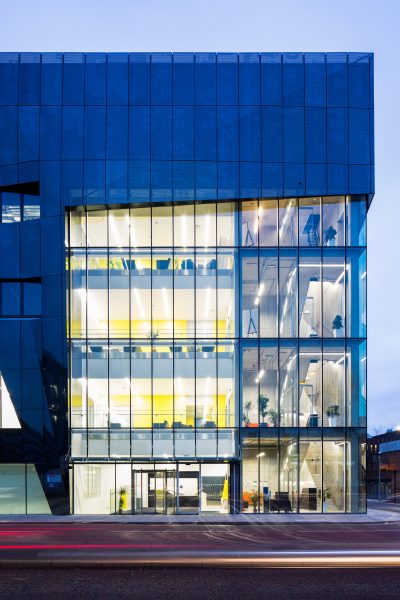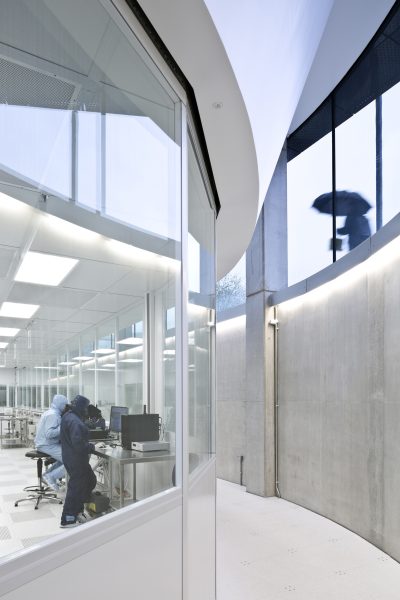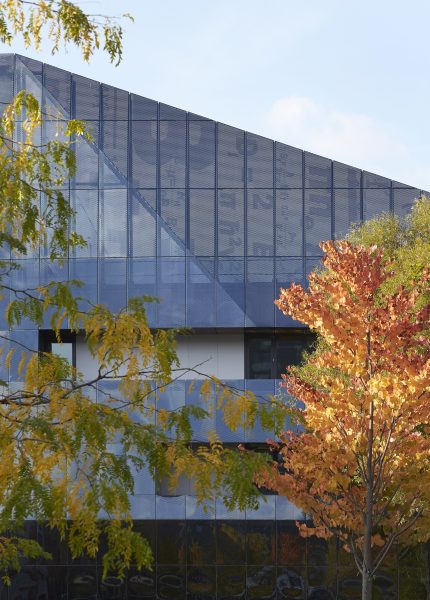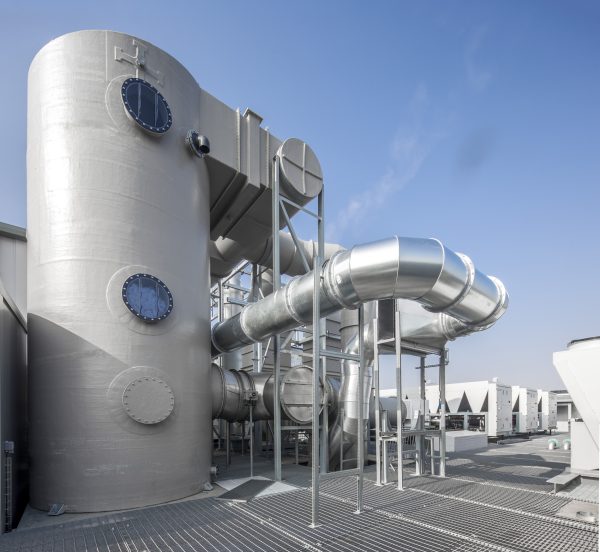- Size 7800m²
- Location Manchester, UK
- Client The University of Manchester
- Year 2015
- Status Built
- BREEAM Rating Very Good
- Sectors: Education Science and Technology
Playing a leading role in scientific discovery and material innovation, the National Graphene Institute in Manchester is a research and incubator centre dedicated to the development of the ‘wonder material’ graphene, first isolated at the university in 2004. The high-performance building was carefully designed to meet the precise technical needs of the researchers that use it. It features a striking exterior veil of black mirror stainless steel panels, each one containing thousands of perforations that represent equations used in graphene research.
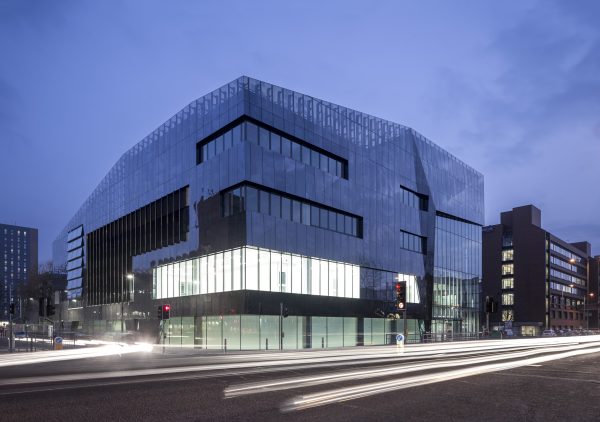
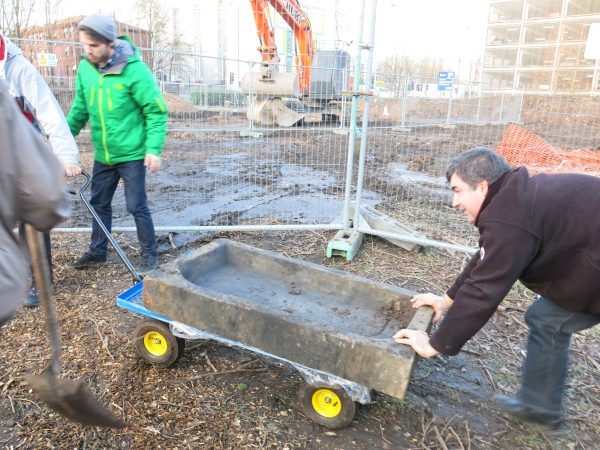
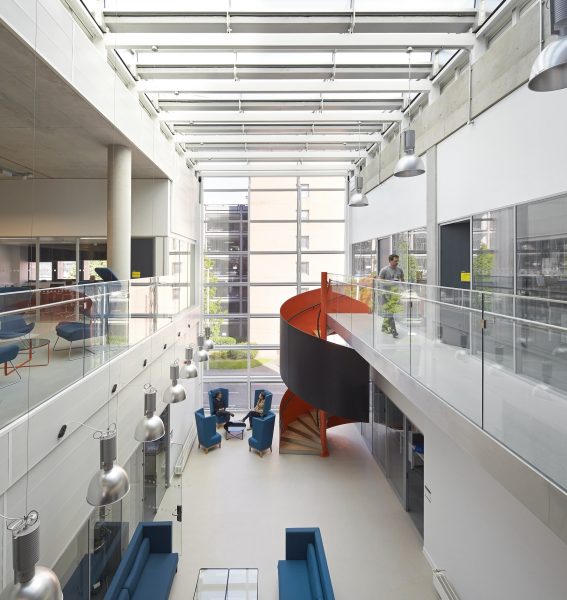
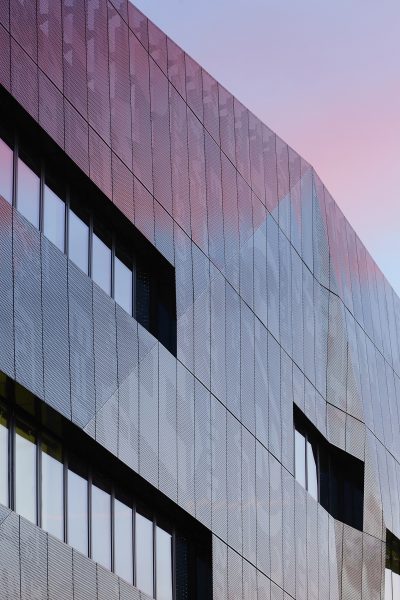
“This is a truly significant building for the university and our on-going commitment to cutting edge research and development into Graphene. The successful delivery of this project is a testament to the collaborative approach of the project team and has been a catalyst for further projects including the Graphene Engineering Innovation Centre.”
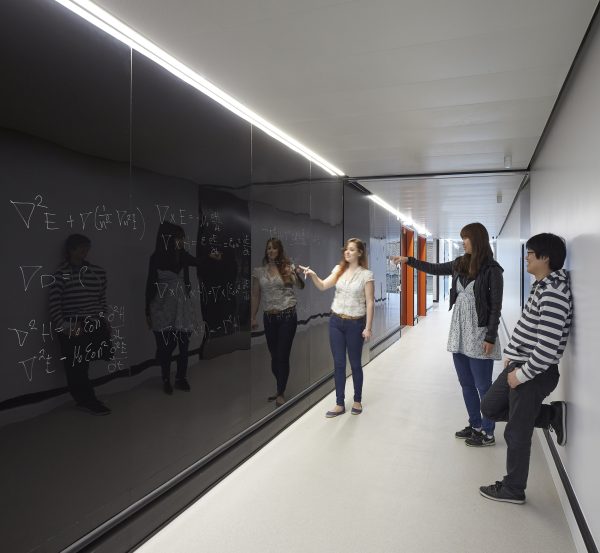
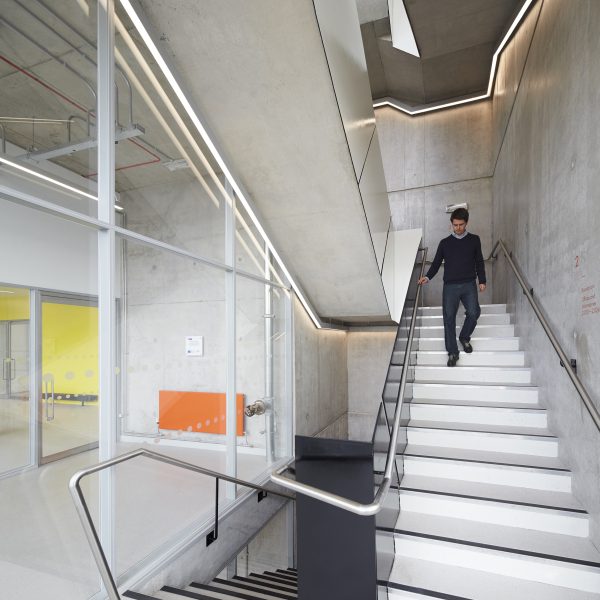
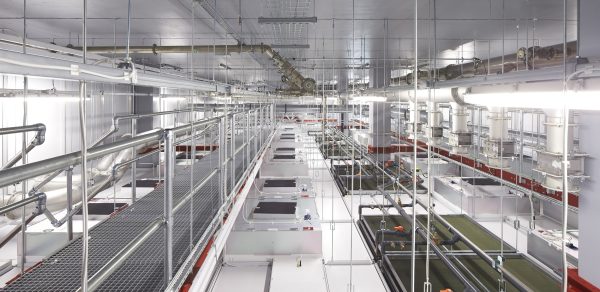
“This is a building that expertly balances the enormous servicing and technical demands of laboratory space with the experimental requirement of a place that will attract some of the brightest minds in science and industry.”
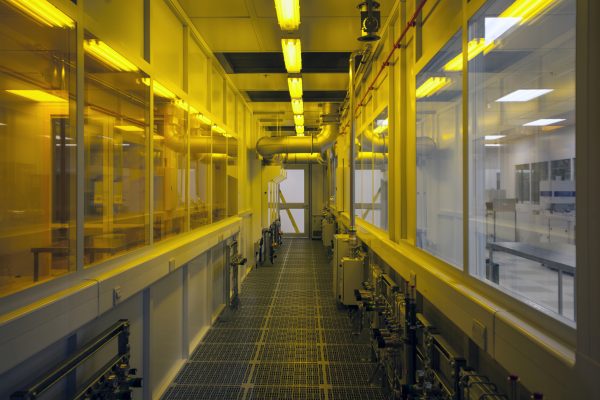
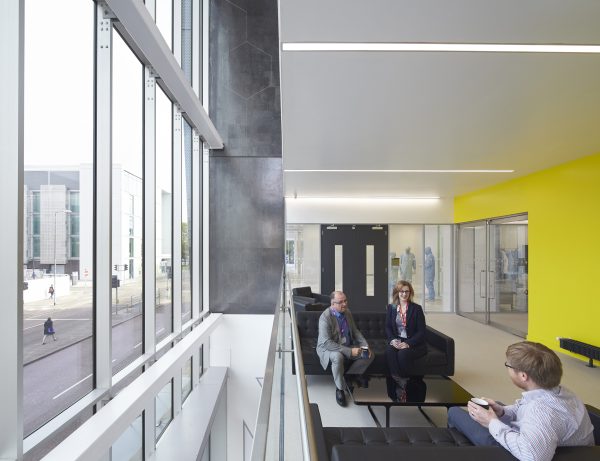
Stats
21
different grasses and wildflowers planted to provide pollination habitats1760
perforated panels make up the veil600 +
research papers have been published since the Institute was openedAwards
The Plan Award: Education - Shortlist
RIBAJ North West Award - Winner
RIBA National Awards - Winner
Civic Trust Awards - Winner
BCI Awards Major Building Project of the Year - Winner
BCI Awards BIM Project Application of the Year - Winner
North West Regional Construction Awards: BIM Project of the Year - Winner
Blueprint Awards - Finalist
- Size 7800m²
- Location Manchester, UK
- Client The University of Manchester
- Year 2015
- Status Built
- BREEAM Rating Very Good
At the University of Manchester in 2004, Kostya Novoselov and Andre Geim made a major scientific breakthrough when they became the first physicists to isolate graphene, a nanomaterial heralded for its exceptionally high tensile strength, electrical conductivity and transparency. The two were jointly awarded the Nobel Prize for Physics in 2010. Working in collaboration with Novoselov, we designed a new centre for cutting-edge research into graphene, taking pride of place at the university that helped unlock the material’s potential.
Located in the university’s Science Quarter, the National Graphene Institute is housed in a compact 7,600 sqm structure over five-storey. The building is enclosed by an economic inner skin comprising a composite cladding panel system, which provides weather tightness and thermal insulation as well as accommodating flush windows and other openings as required.
Fixed to the outside is a separate, perforated black stainless steel veil that envelops the volumes of the building with a continuous, unifying texture and fluid shape. The veil peels away from the building strategically to reveal glimpses of the activity inside, with flashes of colour that punctuate the cool interior.
To achieve the best vibration performance, the main cleanroom is located in the basement. The ceiling of the cleanroom is thoughtfully angled around its perimeter so that the scientists working inside are visible to the public peering in from the pavement above. This corridor, which doubles as a gallery space, allows visitors to observe activity in the controlled spaces without having to ‘gown up’.
The building also includes a second cleanroom, as well as laser, optical, metrology and chemical laboratories, offices, and ancillary accommodation. Offices and labs are distributed across all floors offering individual research teams the facilities needed to operate coherently in one area and enhancing the exchange of ideas between the sciences. The seminar room, which hosts day-to-day activities as well as conferences, leads onto a roof terrace with a biodiverse garden, offering a break from the work happening below.
Both an ongoing facilitator of cutting-edge research and an incubator of future innovation, the institute is an essential component in the UK’s bid to remain at the forefront of the commercialisation of graphene, a material with truly revolutionary potential.

